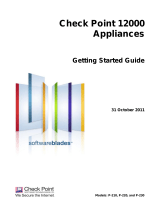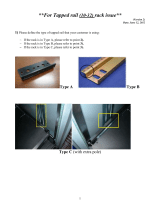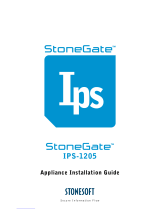
Contents
Important Information ............................................................................................. 3
Safety, Environmental, and Electronic Emissions Notices .................................. 4
Introduction ............................................................................................................. 8
Welcome ............................................................................................................. 8
Check Point 4000 Appliances Overview .............................................................. 8
Shipping Carton Contents.................................................................................... 9
Terminology......................................................................................................... 9
Rack Mounting ...................................................................................................... 10
Rack Mounting Hardware and Tools ...................................................................10
Attaching the Ear Mount Brackets to the Appliance ............................................11
Attaching the Rail Plates ....................................................................................11
Attaching the Appliance Rails to the Appliance ...................................................12
Installing the Appliance in the Rack ....................................................................13
Configuring Check Point 4000 Appliances ......................................................... 14
Powering On.......................................................................................................14
Using the First Time Configuration Wizard .........................................................15
Starting the First Time Configuration Wizard ..................................................15
Welcome ........................................................................................................16
Appliance Date and Time Setup ....................................................................16
Network Connections .....................................................................................16
Routing Table ................................................................................................16
Host, Domain Settings, and DNS Servers ......................................................16
Management Type .........................................................................................17
Summary .......................................................................................................18
Creating the Network Object ...............................................................................18
Advanced Configuration .....................................................................................18
Connecting to the CLI ....................................................................................18
Check Point 4000 Appliances Hardware ............................................................. 19
Front Panel Components ....................................................................................19
Check Point 4200 Front Panel .......................................................................19
Check Point 4600 Front Panel .......................................................................20
Check Point 4800 Front Panel .......................................................................20
Using the LCD Panel .....................................................................................21
Expansion Line Cards ....................................................................................23
Hard Disk Drives ............................................................................................23
Rear Panel Components ....................................................................................23
Main Power Switch ........................................................................................23
Redundant Power Supply Units (Check Point 4800) ......................................23
Customer Replaceable Parts ..............................................................................24
Power Supply (Check Point 4800) .................................................................24
Expansion Line Card......................................................................................25
Restoring Factory Defaults .................................................................................. 27
Restoring Using the WebUI ................................................................................27
Restoring Using the Console Boot Menu ............................................................27
Restoring Using the LCD Panel ..........................................................................28
Registration and Support ..................................................................................... 30
Registration ........................................................................................................30
Support ...............................................................................................................30
Where To From Here? ........................................................................................30
Compliance Information ....................................................................................... 31
Declaration of Conformity ...................................................................................31


























